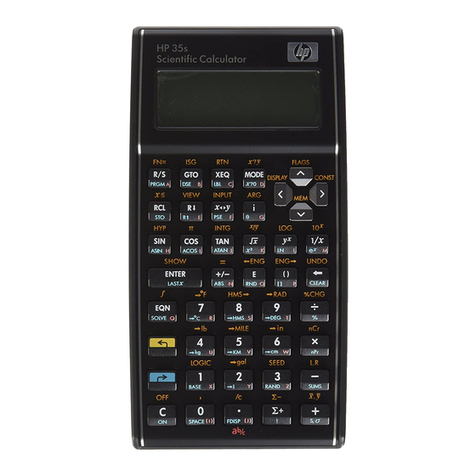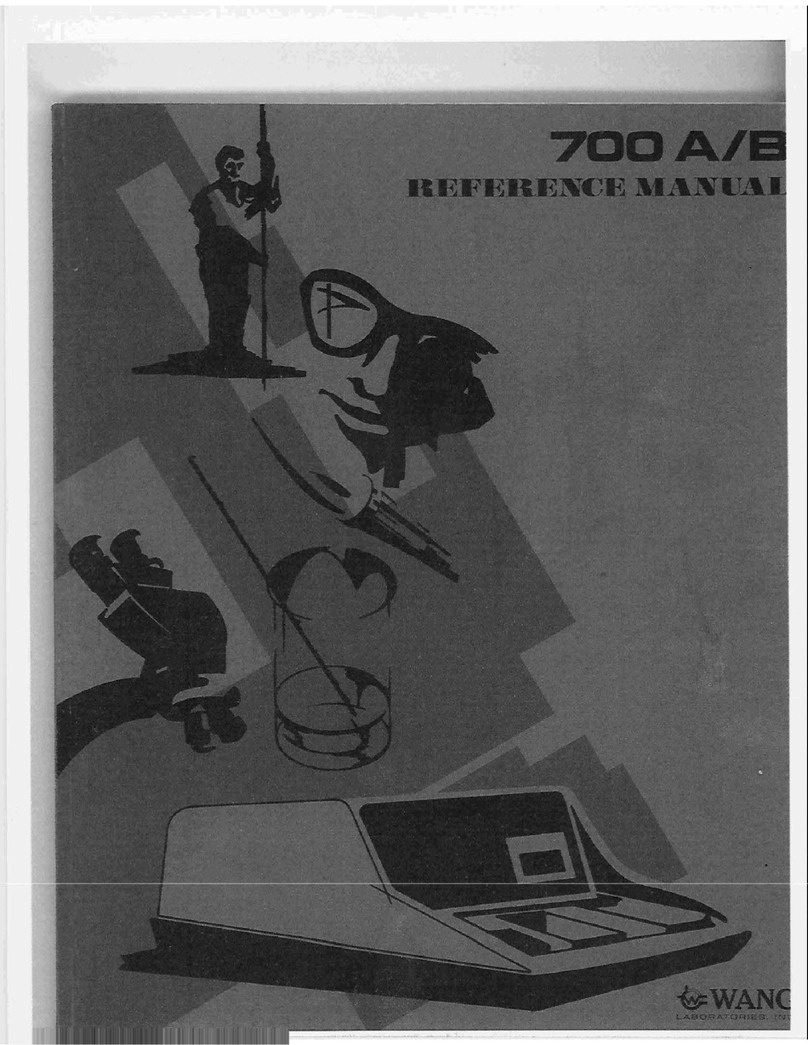
Section I
lnÍroduction
Table 1-l
-la0 Series Models and Applications
Model
300
Range of Applications
Business to simple engineering calculations.
310 -
320
Statistical and business calculations.
Scientific. engineering, statistical. and business calculations.
32OKT Same as Model 320 with trigonometric capabilities for sine, cosine, arc sine,
and arc tangent (input in degrees).
32OKR Same as Model 320KT except input in radians.
360 Same as Model 320 with four additional random-access storage registers.
36OKT Same as Model 360 with trigonometric capabilities for sine, cosine, arc sine,
and arc tangent (input in degrees).
360KR I
362 I
36tKr i
-l
36tKR I
Same as N{odel 360KT except input in radians.
Same as \íodel 320 with twelye additional random-access storage registers
or twenty-four half-registers.
Same as lvlodel 362 with trigonometric capabilities for sine, cosine, arc sine,
and arc tangent (input in degrees).
Same as Model 362KT except input in radians.
I.2 }IODEL 3OO ELECTRONIC CALCULATOR
The \Íode1 300 Calculator is the basic model
in the 300 Series. Operational capabilities in-
clude addition, subtraction, multiplication,
chain multiplications, divisions, reciprocals,
percentages, automatic extensions, weighted
averages. etc. Two independent adders, one on
each side of the keyboard, provide storage and
recall capability. Accumulating switches are
provided for automatic accumulation of entries
and / or multipliers in the dght adder, and pro-
duct or extension accumulations in the left
adder.
All operations, as well as number and deci-
mal input, are initiated by the keys on the key-
board. Display is provided by 5/6 in. high glare-
tiee indicator tubes that display the readout
in conventional form (algebraic sign and nu-
merical value with properly positioned deci-
mal point). t_2
A "clear display" key enables the user to
clear the display without destructing the con-
tents ol the accumulators, etc. A "clear all"
key is provided to clear the accumulators and
Figure 1-1. Model 300K Keyboard.




























